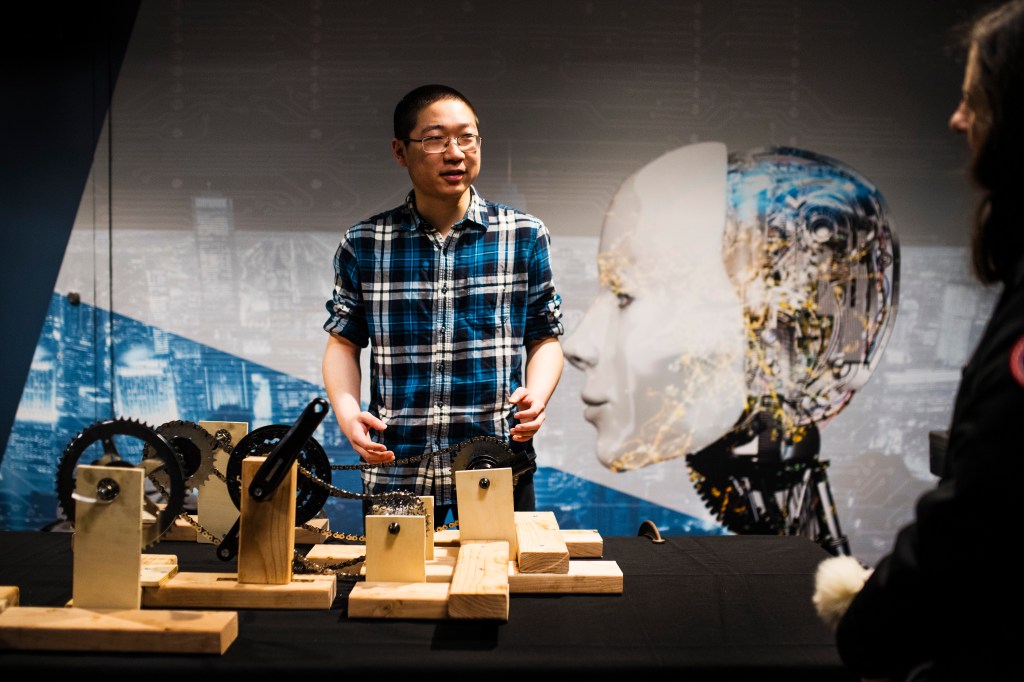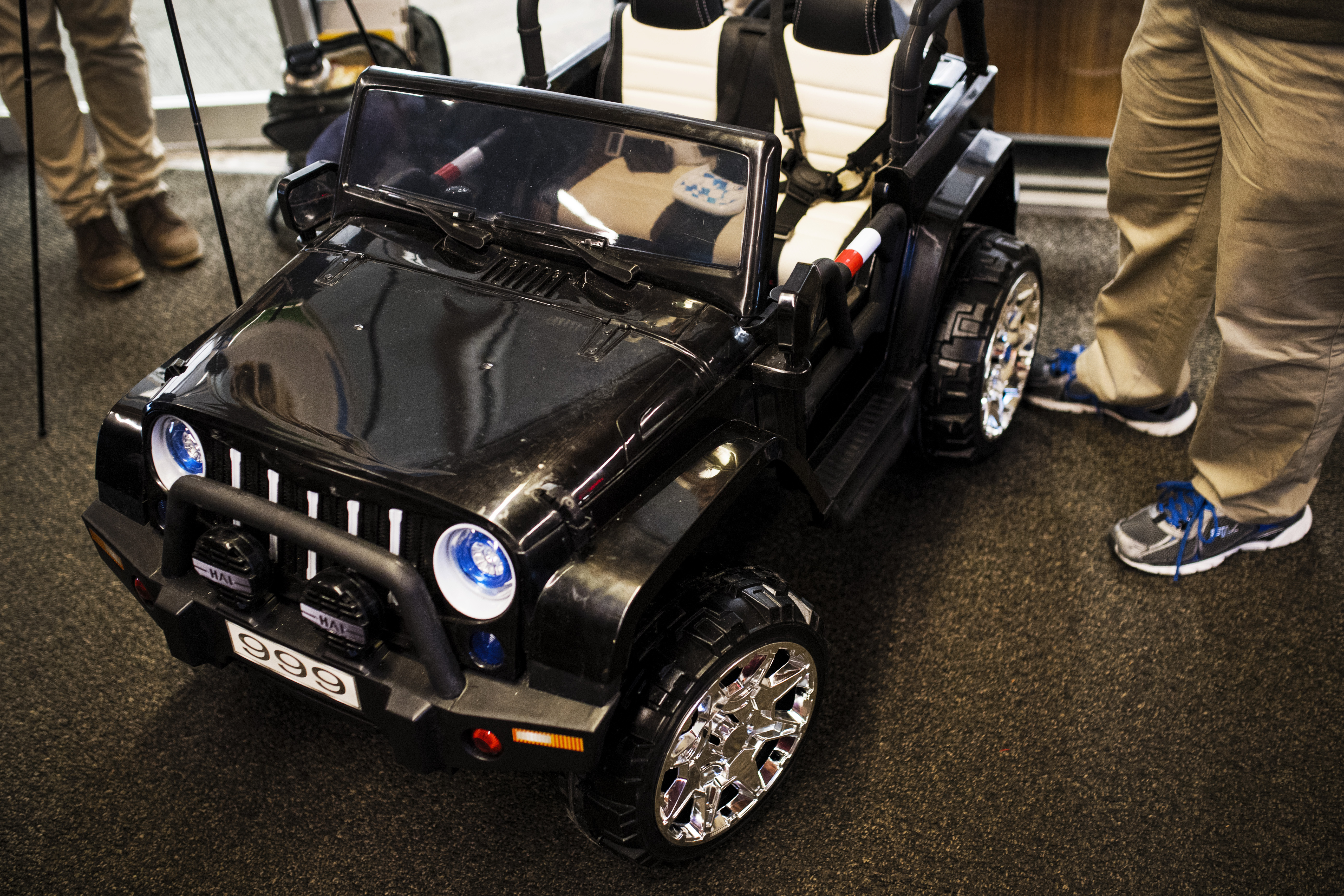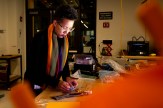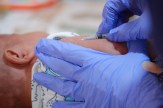Student engineers adapt bikes, cars, guitars and more for clients with disabilities

Sam Beurskens has trifunctional protein deficiency, a rare condition that prevents his body from fully processing messages from his brain, limiting his ability to walk. The 22-year-old would like to be able to travel further and faster on a bike, but standard models don’t work well for him. So his cousin, Charlie Beurskens, E’21, is building something better.
Beurskens’s vision is a new type of tricycle that allows the rider to pedal by pushing the handlebar. On Thursday, he and his partner, Yiwen Dong, E’20, featured a prototype of their project—currently a series of chain rings fitted into a foundation of wooden blocks — at the Enabling Engineering student organization’s annual showcase.

Photo by Adam Glanzman/Northeastern University
Through Enabling Engineering, students design and build low-cost devices to meet the needs of older adults, individuals with physical and cognitive disabilities, and caregivers. Students collaborate with faculty, staff, alumni, advocacy groups, clinicians, and local businesses to build their devices. About 500 students have gone through the interdisciplinary program since its inception in 2012, according to Waleed Meleis, associate professor in the Department of Electrical and Computer Engineering and the group’s faculty advisor.
“We’re helping people in need and providing a service to the community. On the other side, we’re providing our students with a community-focused, educational opportunity,” said Meleis.
The showcase highlighted 19 projects that have been developed over the past year. One of them was inspired by a client’s love of The Beatles.

Photo by Adam Glanzman/Northeastern University
“He has limited use of the left side of his body, but wants to play to acoustic guitar,” said Andrew Musco, E’19. Musco and his team members—Daniel Feller and Petr Horvath, both E’18; Liam Sullivan, E’22; and Zonghao Liu, MS’18—built an adaptive guitar that presses cords automatically so the client can strum with his right hand.
Another project is driven by a child’s need for speed—and a mother’s desire for safety. The child has a disability that impairs her motor function, preventing her from controlling the steering wheel of a ride-on car for kids. A team of six students—Ehsan Ahmed and Zialynn Anderson, both E’18; Maybellene Aung, Winston Heinrichs, and Cameron Smith, all E’19; and Eliot Smullen, (E’21)—has re-tooled one of these cars so the child can control it with simple buttons and a joystick. The modification also comes with a remote control for the parent.
One of Enabling Engineering’s main goals it to train the next generation of engineers to be aware of disabilities, Meleis said.
“These are people who will be starting companies and working in businesses,” he said. “We want them to bring this awareness with them.”





